Lisbon (Lisboa in Portuguese) was once the oldest city on the edges of the known western world, deriving its name from its time as the Roman trading post of Olisipo in 138BC. After a few centuries under Moorish occupation from 714AD, Lisbon was taken by the Portuguese kingdom during the Christian reconquest of the early 12th century. Lisbon was famously the launchpad for the seafaring age of discoveries in the 15th century, with Vasco Da Gama’s voyage to India setting the stage for future Portuguese nautical, trade, and colonial superiority for centuries to come.
The picturesque city of Lisbon sits across a set of seven hills along the banks of the Rio Tejo estuary, with pastel colored buildings, historic monuments, and architectural marvels at nearly every street. Best explored on foot, Lisbon was the last stop on our brief Portugal trip. Heres a view into the 7 attractions and experiences that we enjoyed the most in Lisbon, the City of the Seven Hills.
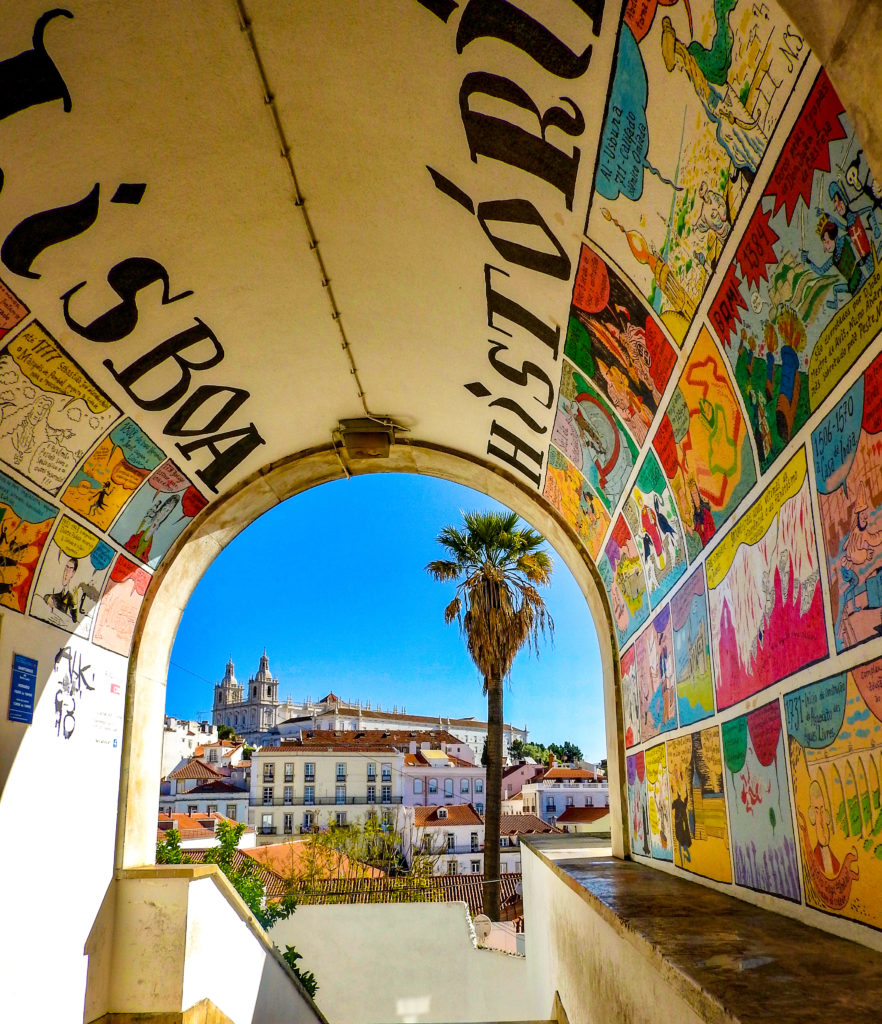
Lisboa art mural with views of Basilica Da Estrela in the distance
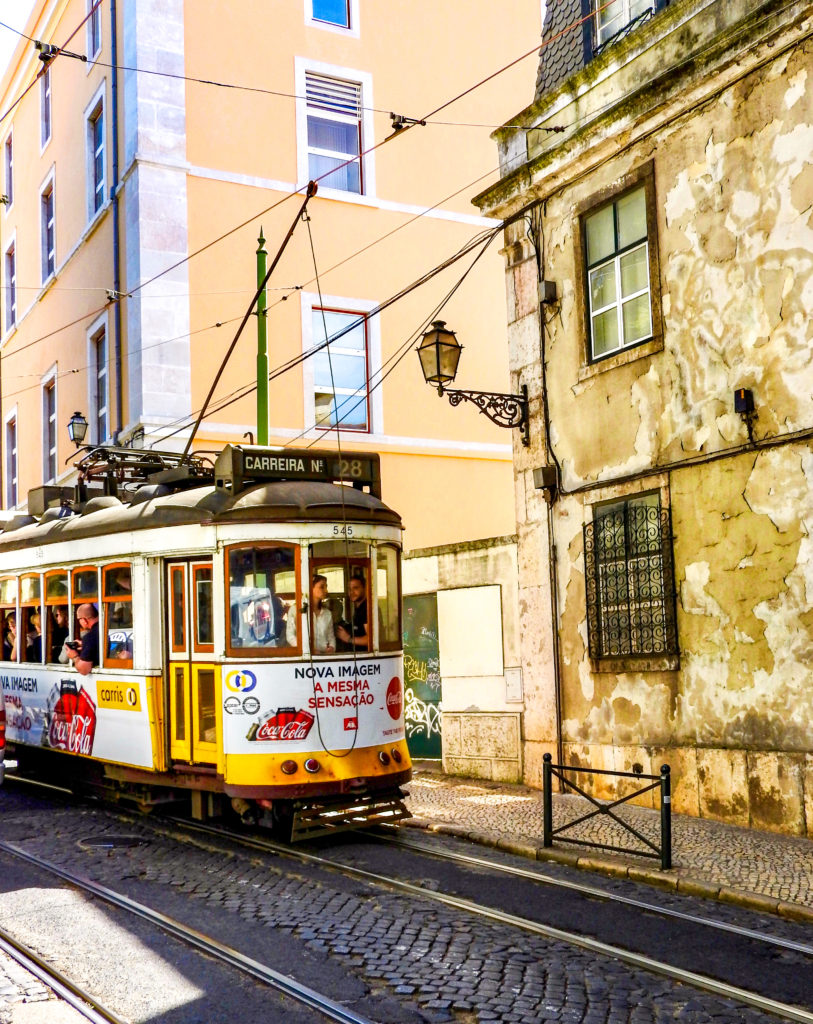
Lisbon trams, one of the iconic symbols of the city
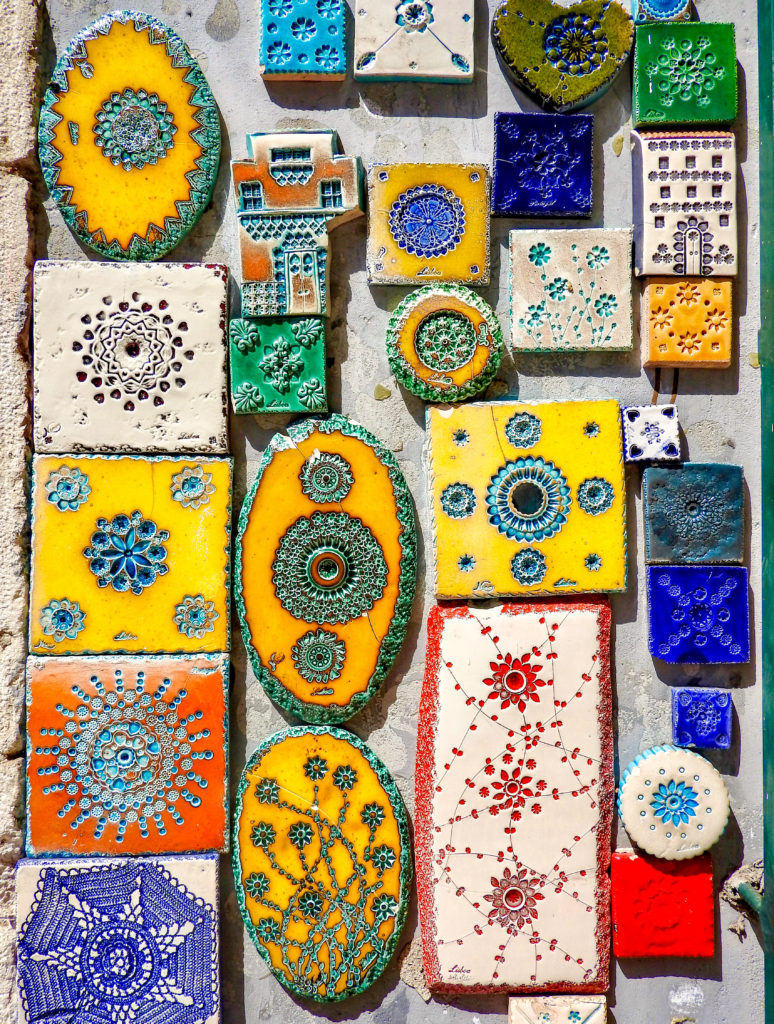
Colorful tile art along one of the stores in Alfama district
1. Climb up the hill to Castelo San Jorge
Our day of exploring Lisbon started with an arduous hike uphill from our AirBnB in Alfama district to the Castelo San Jorge. The steep and narrow cobblestones alleyways were dotted with interesting artwork and occasional grand views of the coast. Upon reaching the summit we were greeted by the imposing walls of the Castelo San Jorge. The castle was built in the early 12th century by the Moors (North African Arabs who invaded and settled most of Portugal & Spain) on the most inaccessible point of the city – right at the top of the hill, as a military fortress meant to repel potential Christian conquests. The castle ramparts provide some of the most breathtaking panoramic views of the city – from the Christ the King statue across the water, the golden gate-esque bridge across the Rio Tejo estuary, to the endless red tiled rooftops and brightly colored buildings that are characteristic of the Lisbon skyline. We took our time enjoying the views, climbing all the way up the castle towers, and were even rewarded with a few peacock sightings in castle lawns.
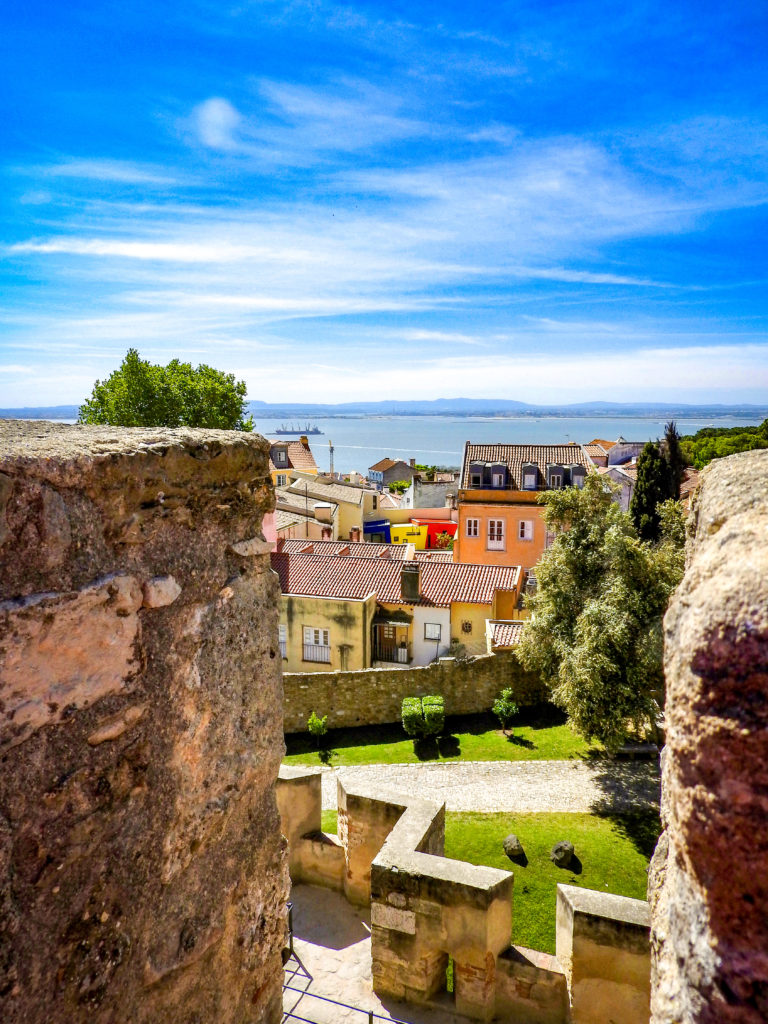
Lovely views on our hike up to the top of São Jorge hill
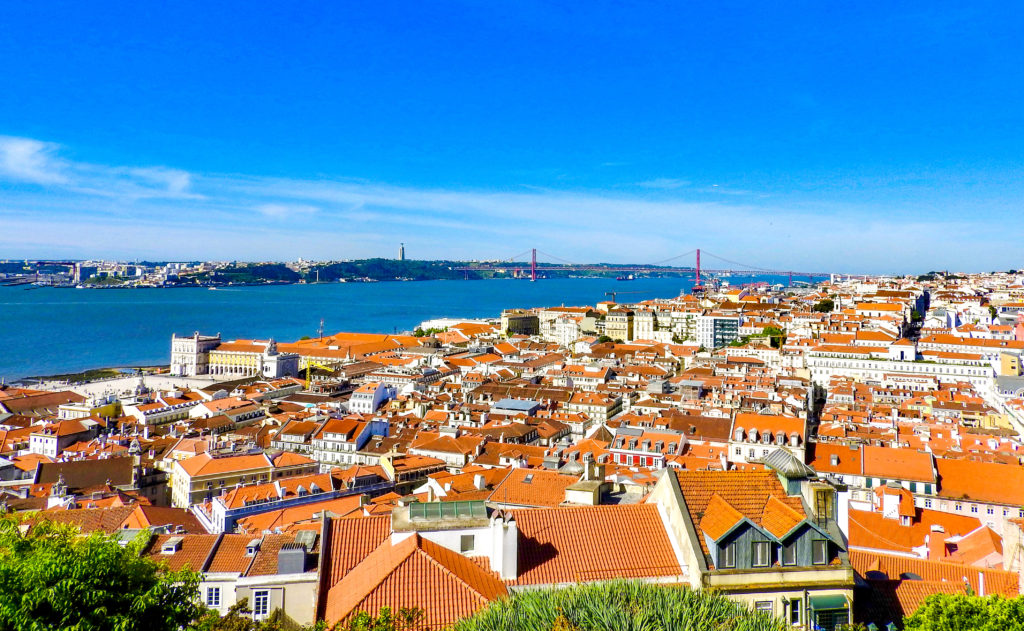
Sweeping views of the Rio Tejo estuary from atop the Castle
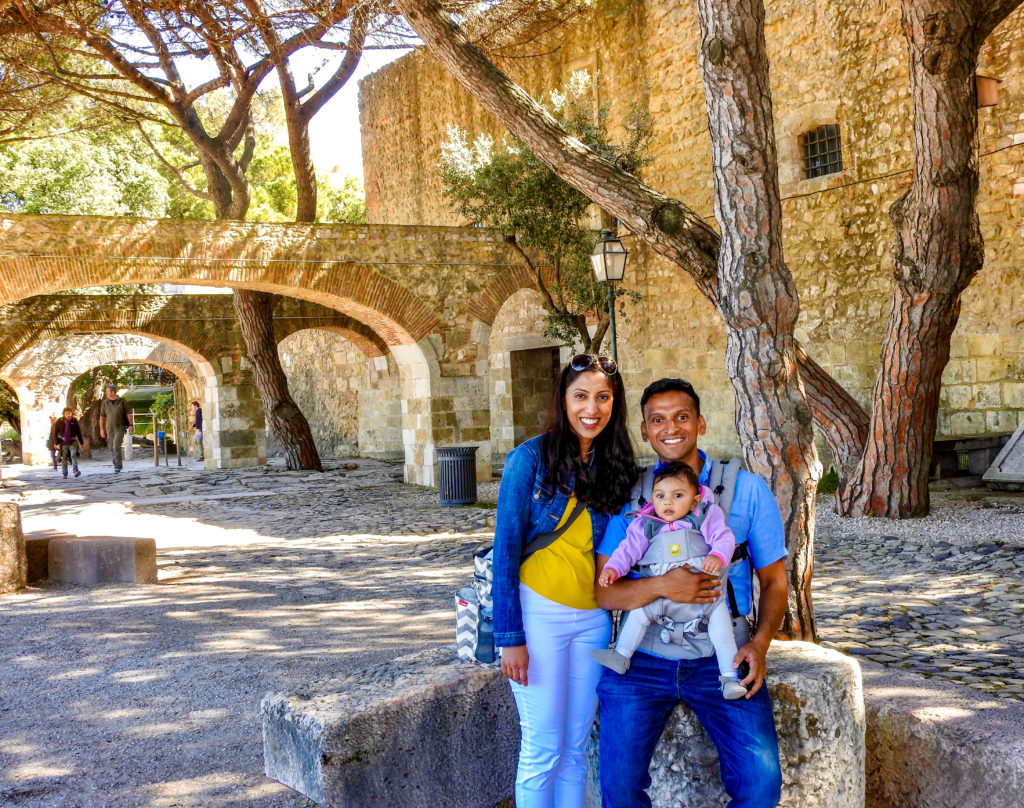
Enjoying some shade after quite a hike up the hill
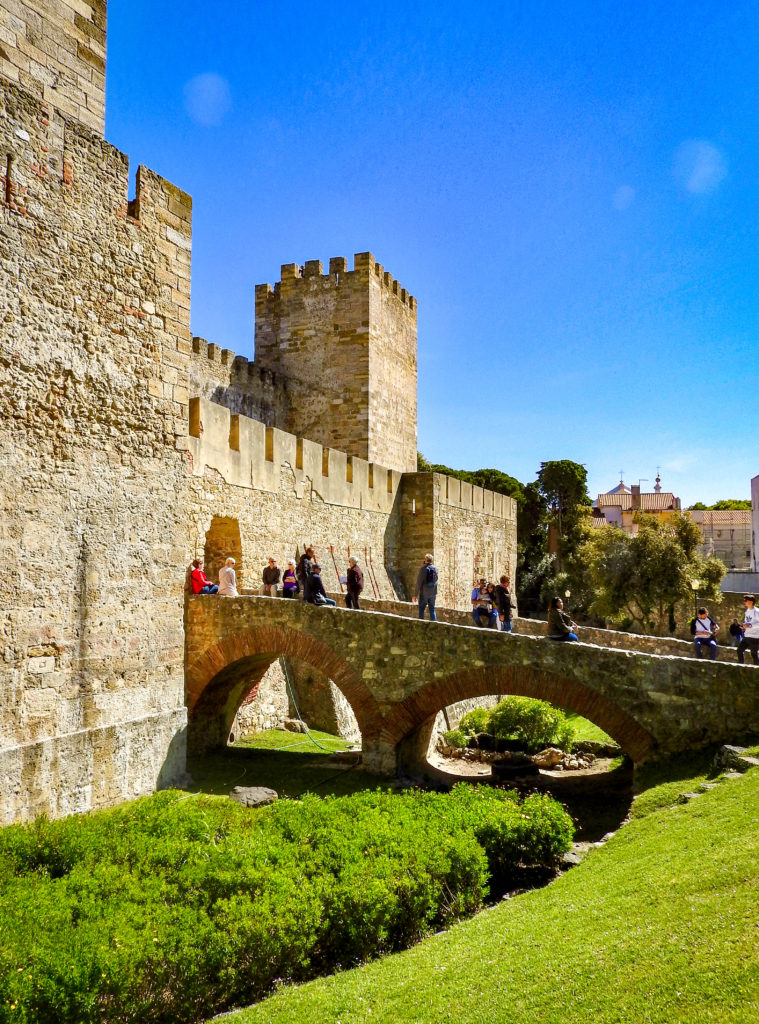
Entrance walkway to the castle ramparts
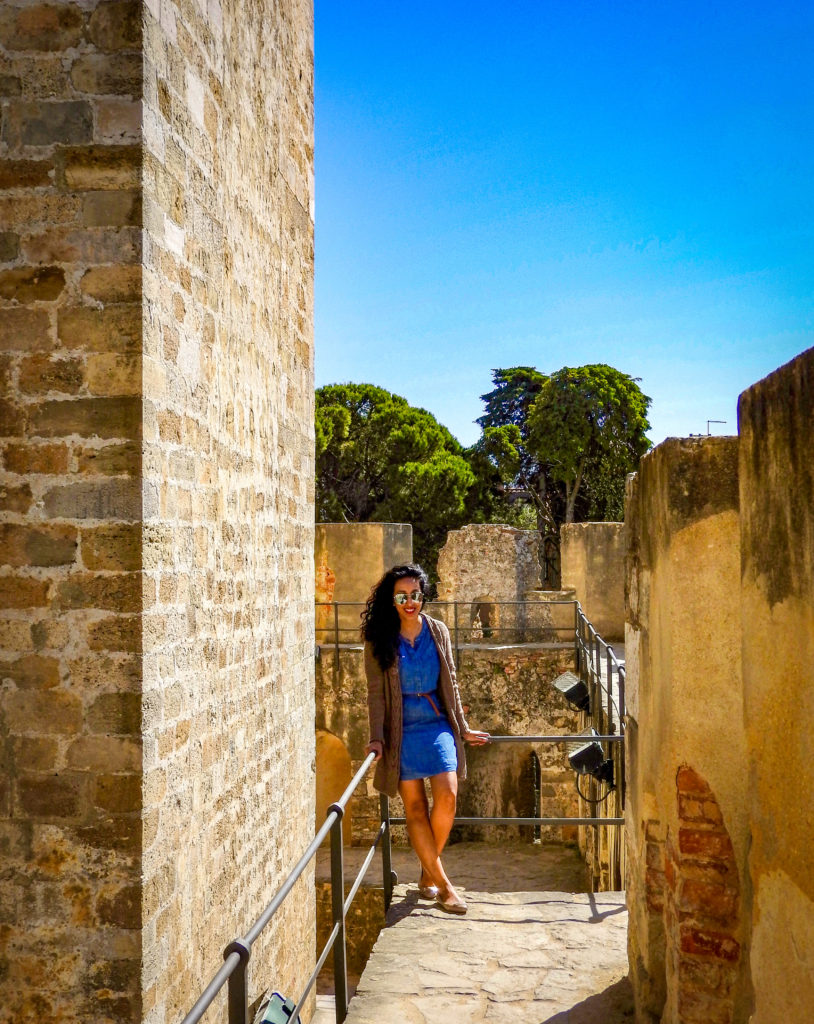
Exploring the ramparts of Castelo San Jorge
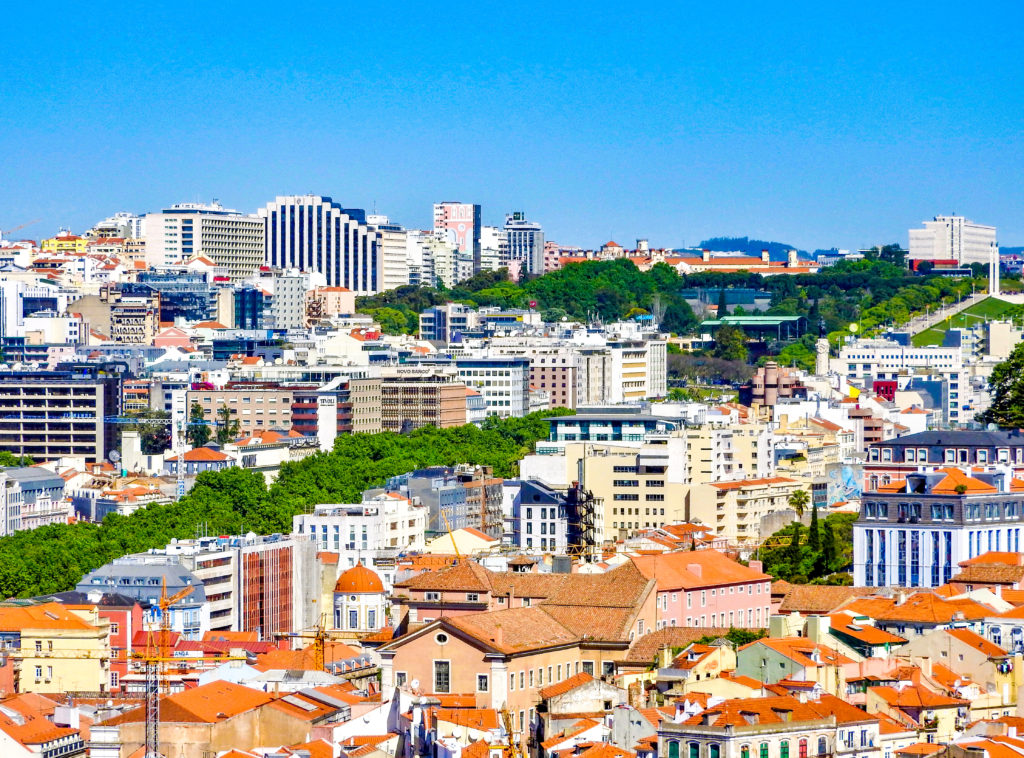
Juxtaposition of old and new – hues of orange tiled roofs against the modern concrete buildings
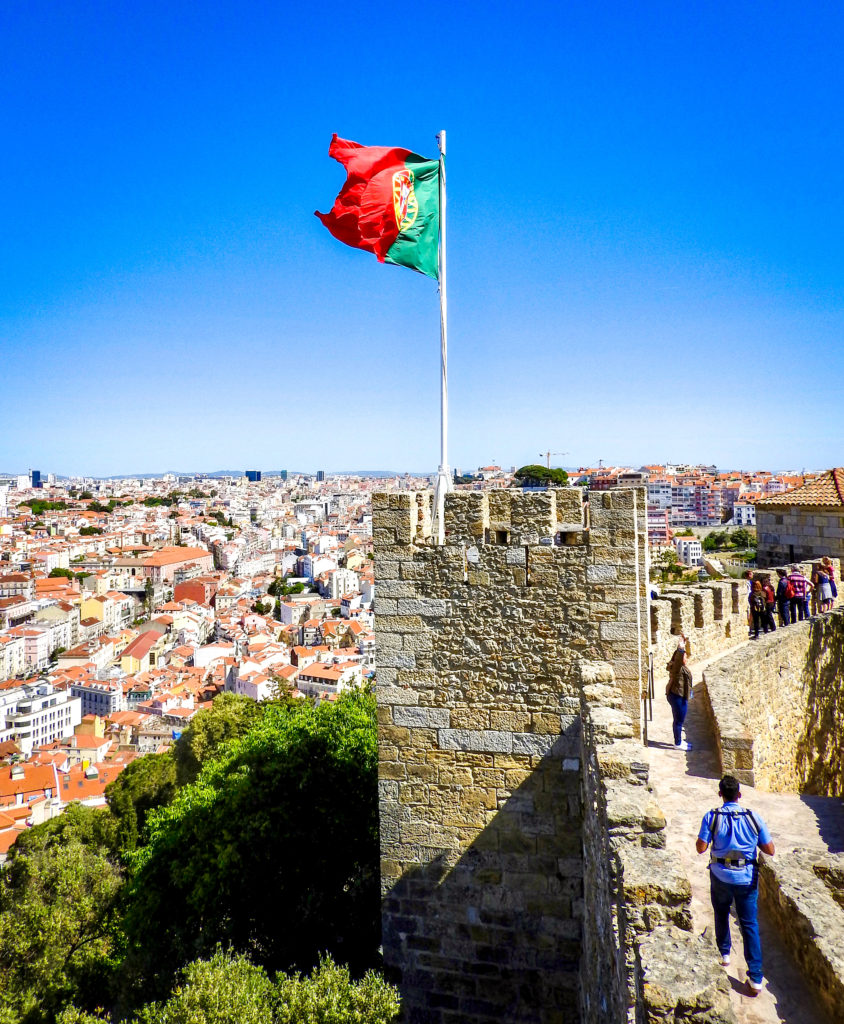
Portuguese colors flying high above the highest point of Castelo San Jorge
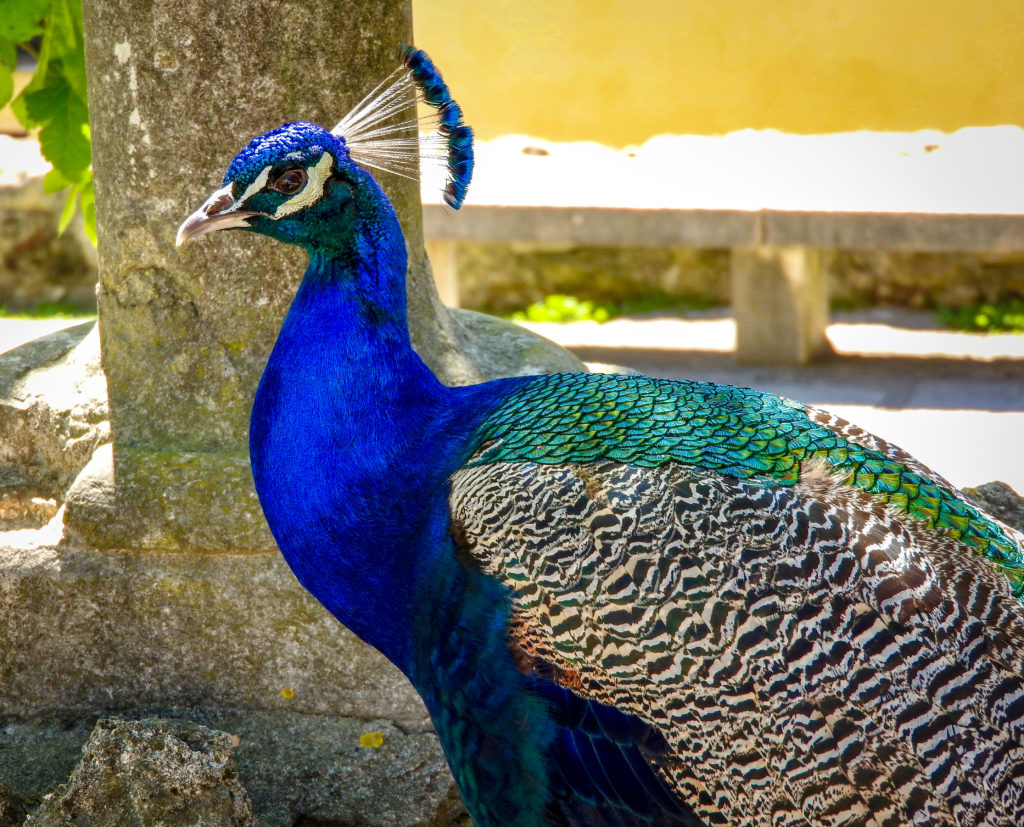
We made a new friend
2. Squint your way through the treasures of the Sé Cathedral
On our way down from the Castle hill, we stopped at the Sé, Lisbon’s main Cathedral. The Sé is known for its rather chunky and boxy looking bell towers and beautiful stained glass rose window. We found that the interior of the the Cathedral was surprisingly quite dark, with very little light making its way into the building though the rose window.
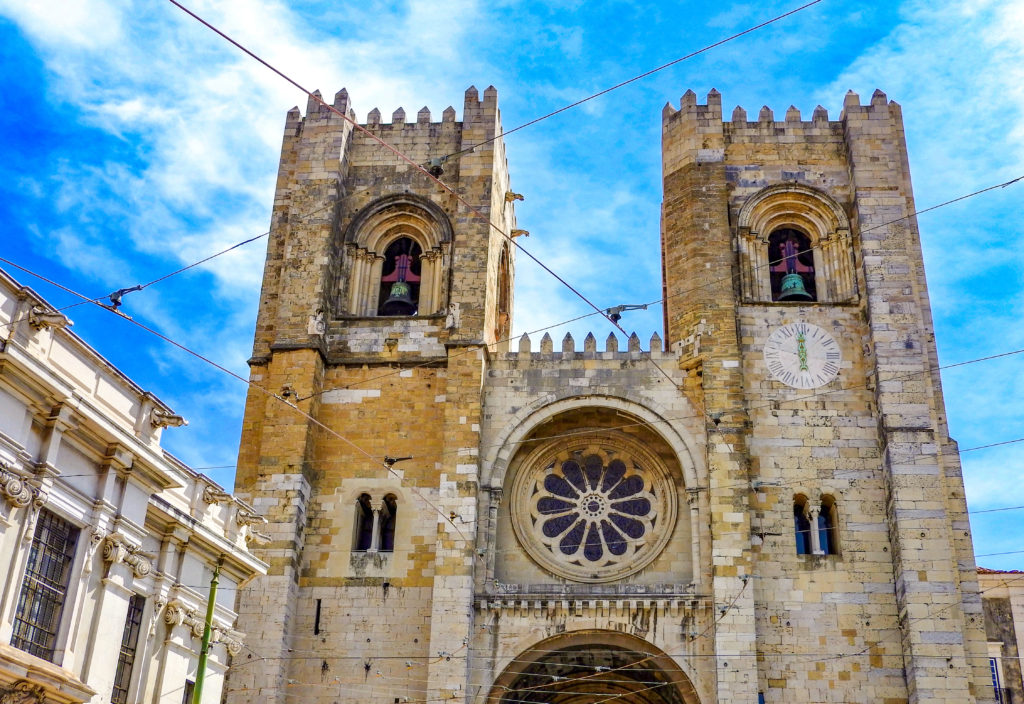
Iconic boxy bell towers of The Sé
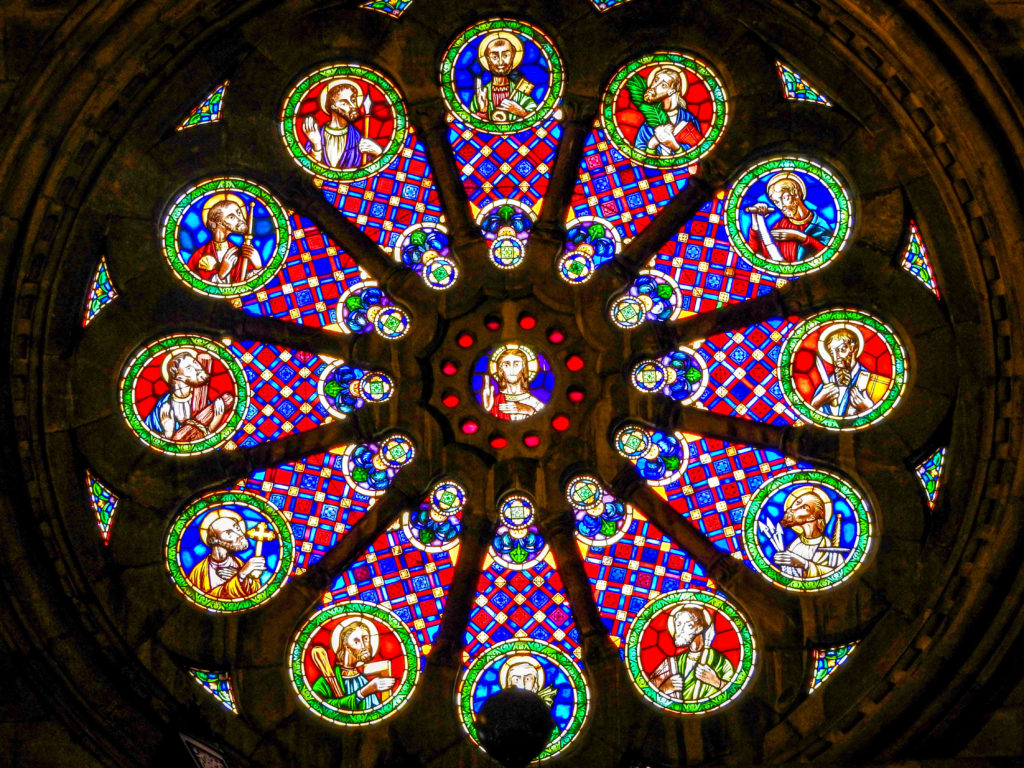
Stained glass of the Rose Window depicting Jesus and the 12 Apostles
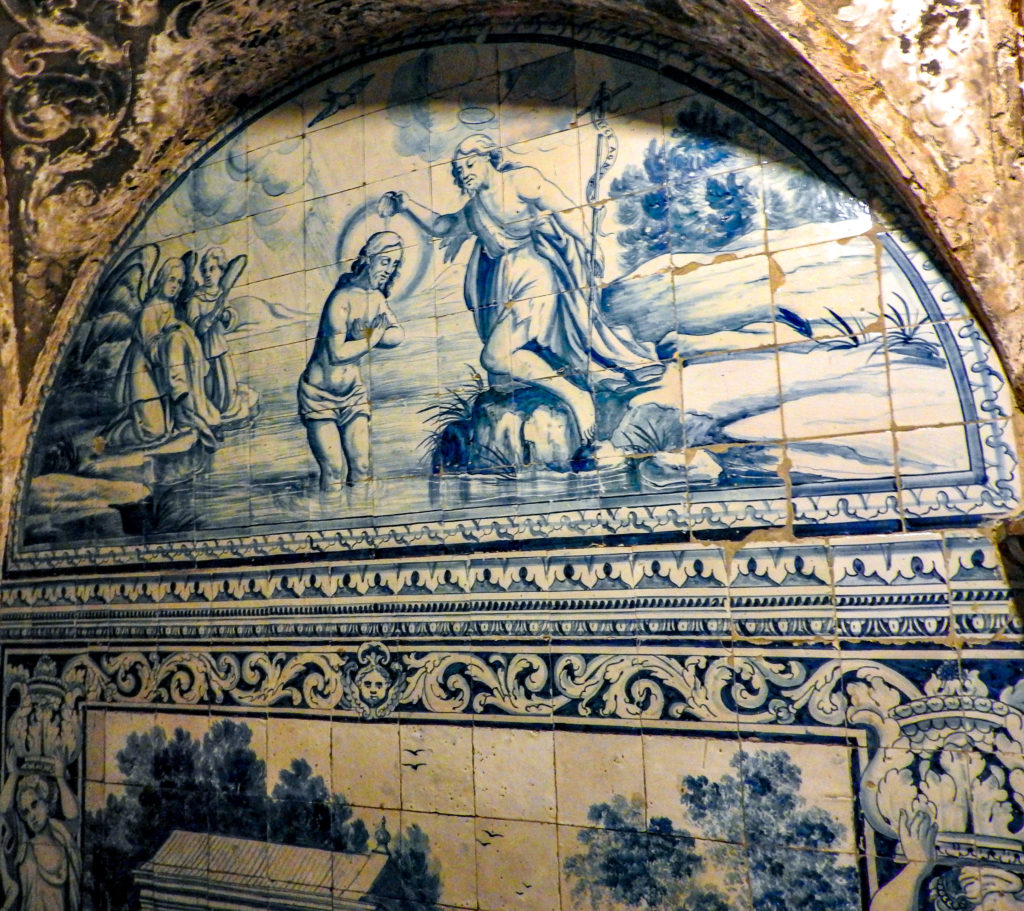
Azulejo porcelain tile mural depicting the baptism of Jesus
3. Marvel at the the Manueline architecture of Mosteiro Dos Jerónimos
To view the quintessential examples of Portuguese architecture in Lisbon, we made our way to the Belém area on the western edge of the city along the banks of the Rio Tejo, and our first stop was at the Mosteiro Dos Jerónimos. This former 16th century monastery best exemplifies Manueline architecture – a uniquely Portuguese style that reflects its seafaring heritage and which derives its name from King Manuel I. Some of the best themes of the lavish & extravagant Manueline style are on display at the monastery – with nautical and oriental influences showing though in the intricately carved pillars of the main nave, and in the braids and ropes motifs of the grand arches of the cloisters. The tomb of Vasco Da Gama, Portugal’s most famous explorer, is located within the lower level of the monastery.
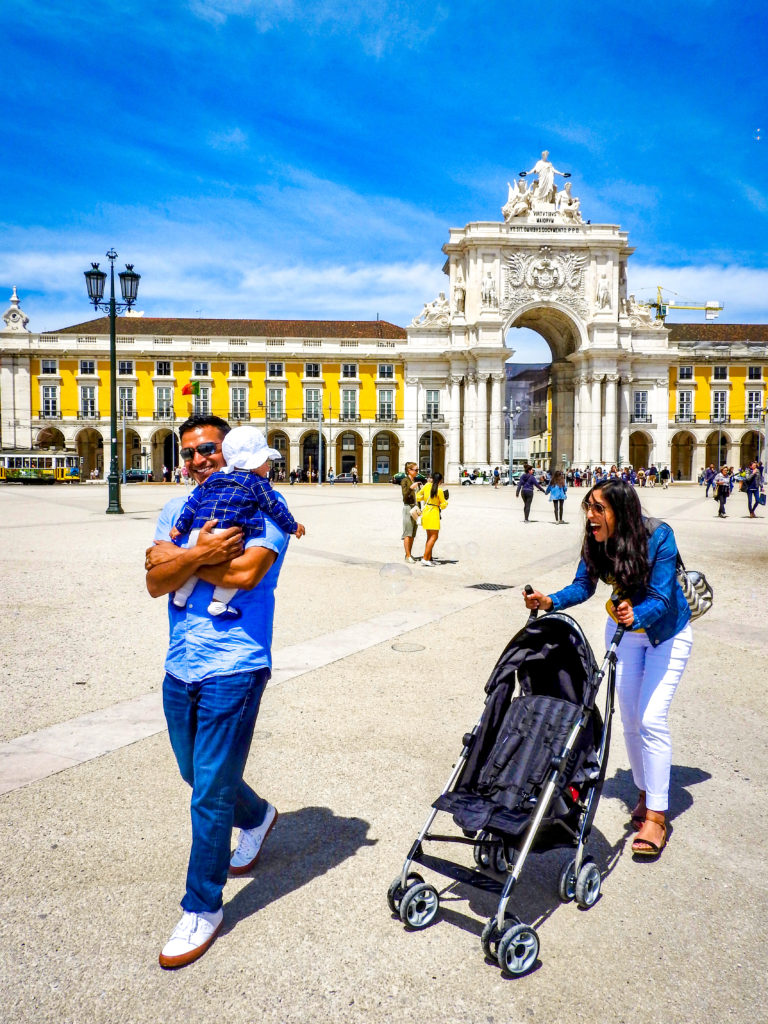
Heading to Belém through Lisbon’s main square of Praça do Comércio
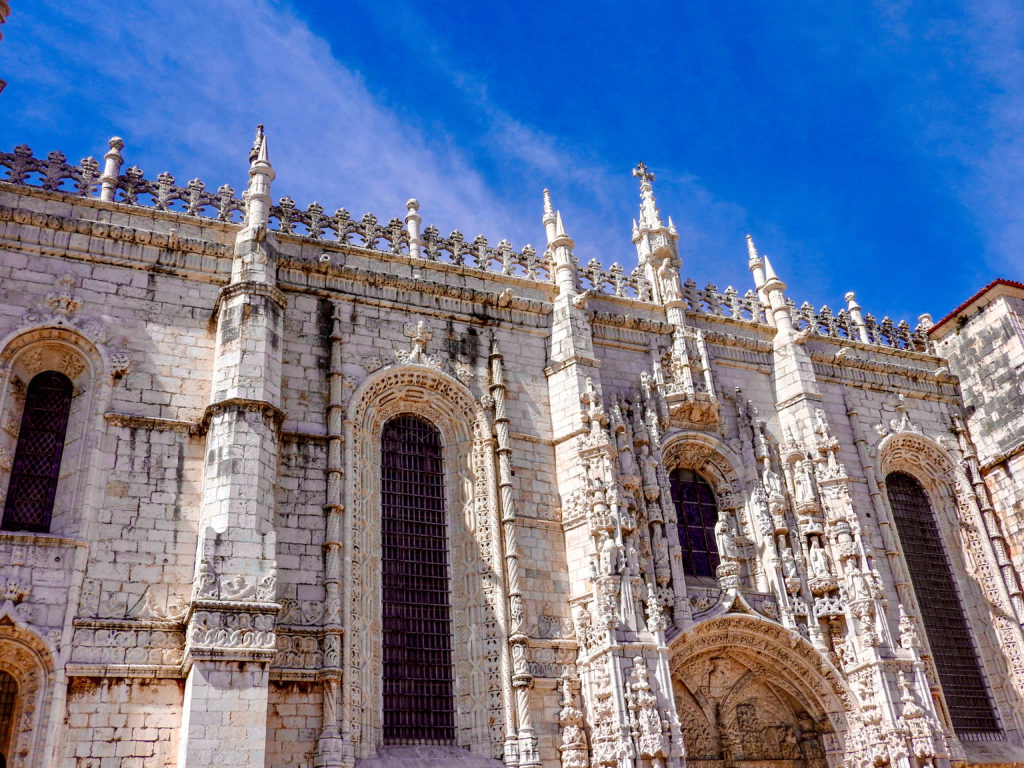
Highly decorated imposing outer walls of the Mosteiro dos Jerónimos
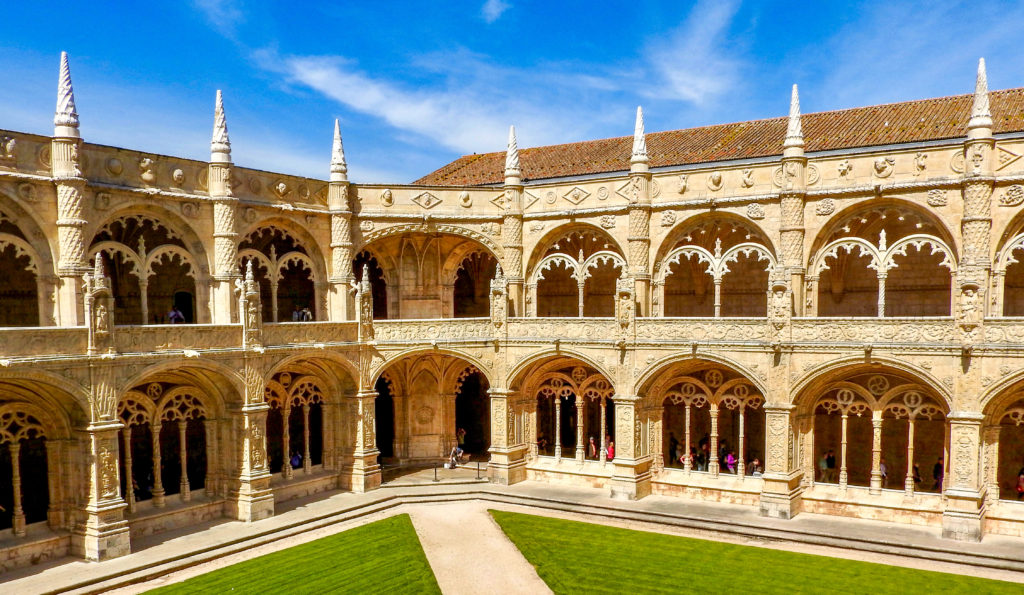
The main courtyard of the monastery
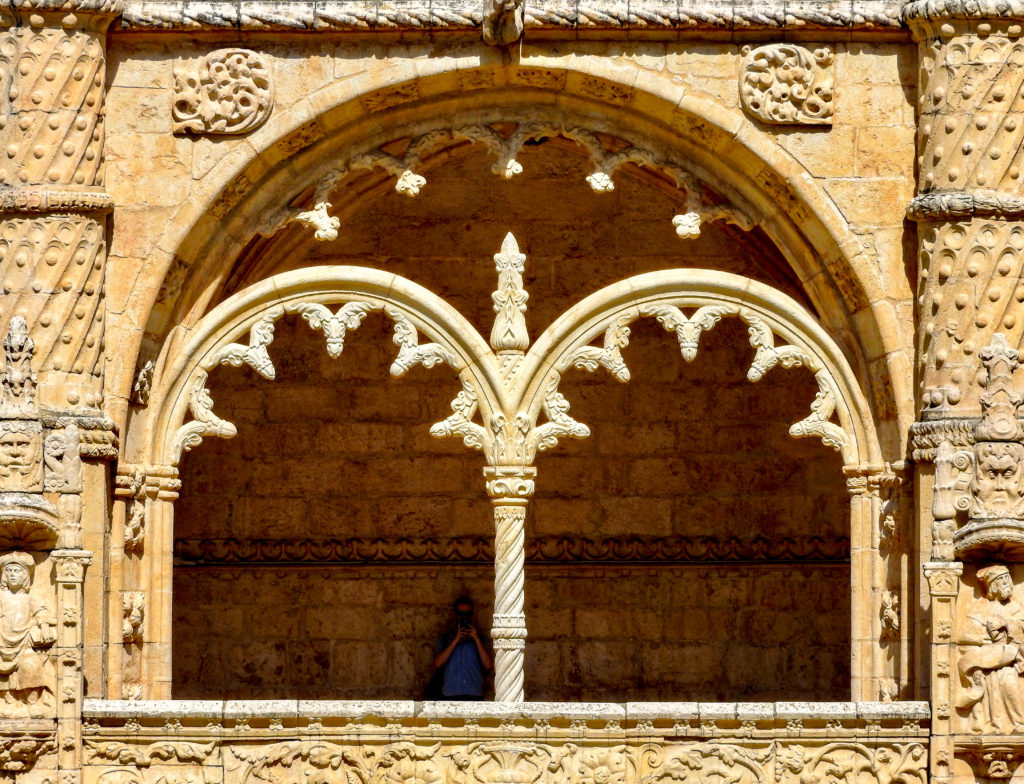
One of the numerous examples of Manueline style adorning the monastery
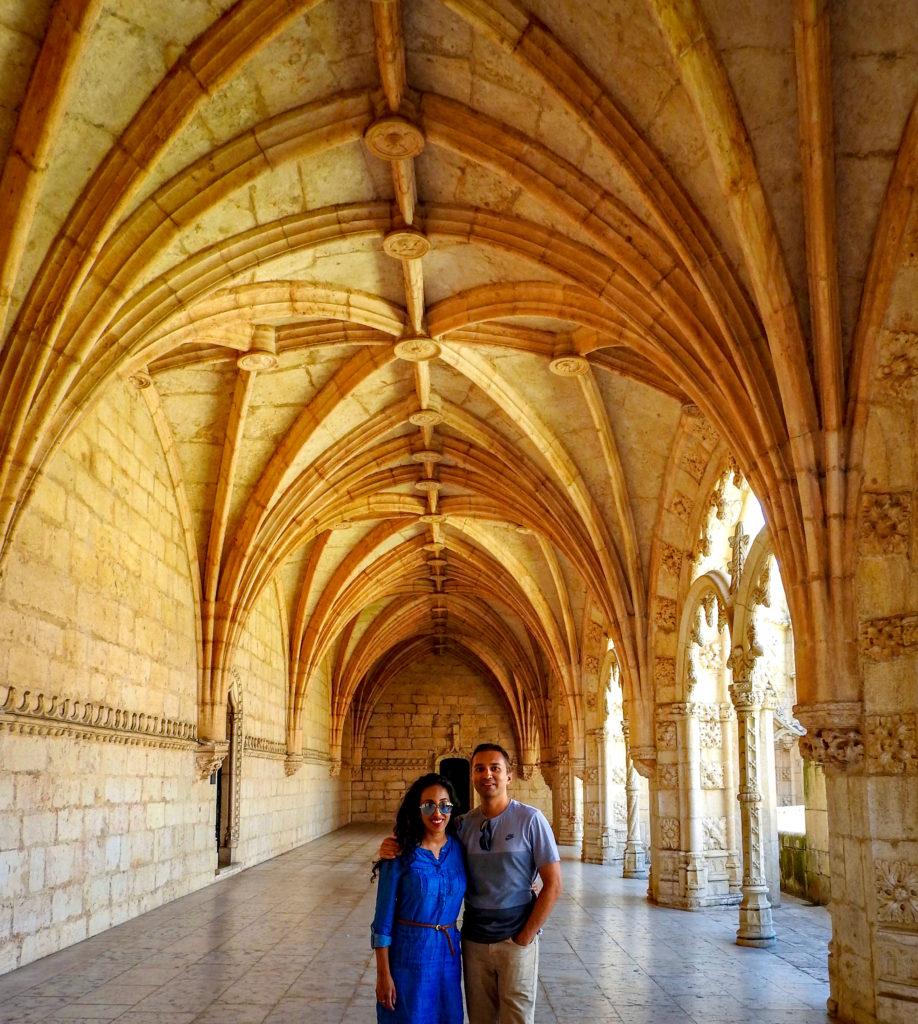
The famed cloisters of Mosteiro Jerónimos (covered walkways)
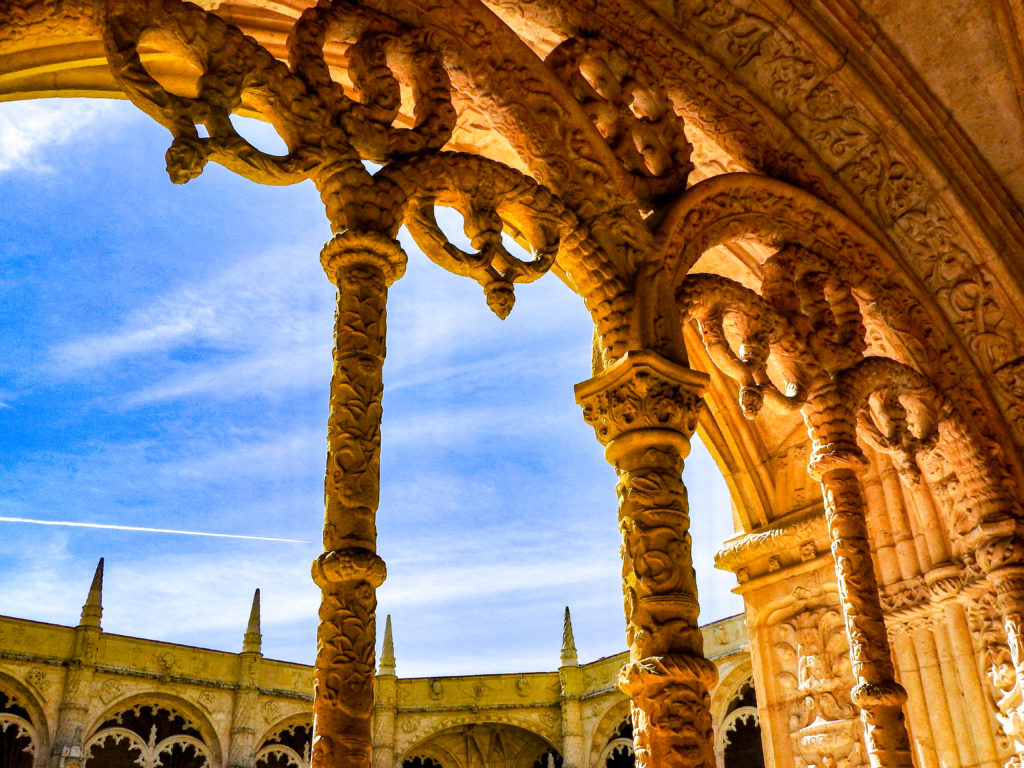
Incredibly richly detailed decoration flanking the cloisters
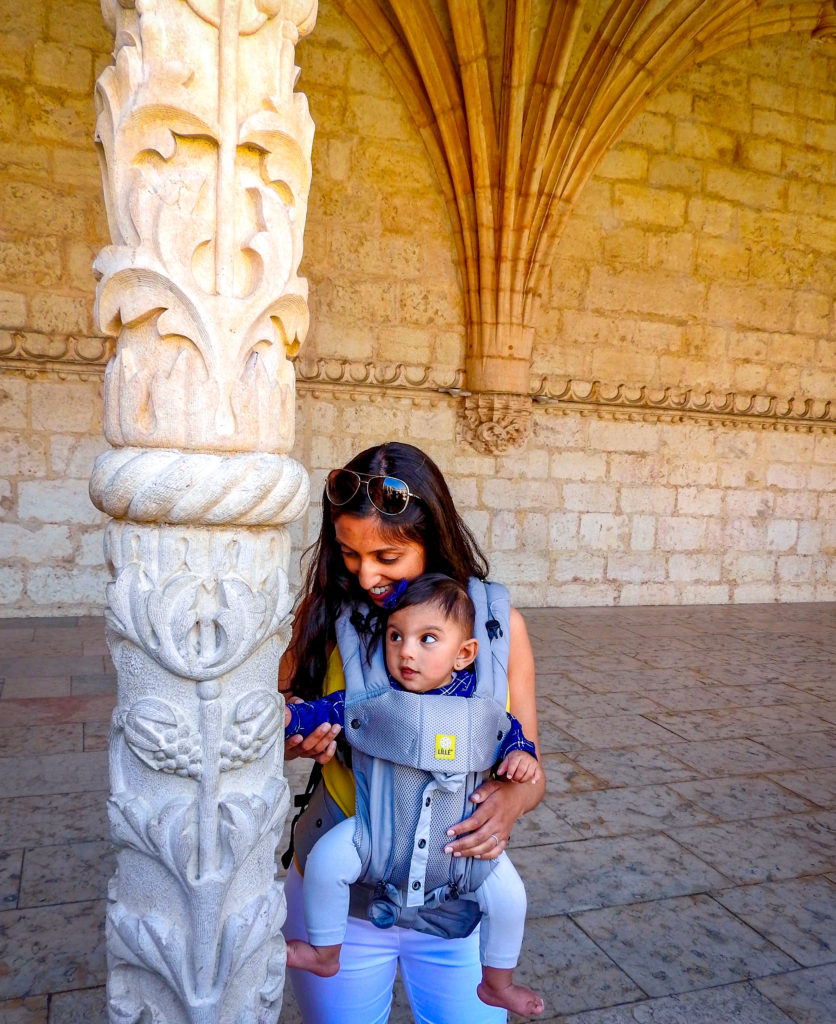
Even baby A was impressed by these botanical designs
4. Admire the beauty of Belém Tower
For Manueline architecture fans and history buffs, another must see is the Belém tower, a military outpost built on the banks of the Tagus estuary, close to the site of Vasco Da Gama’s first voyage to India in 1497. Belém, Portuguese for Bethlehem, is credited with being the launchpad for the era of the Age of Discoveries, which allowed the Portuguese empire to eventually benefit from a monopoly of the lucrative spice trade. The tower’s spires are a prime example of the Manueline style, with crown pieces sitting on braided rope bases, akin to pieces one may find on a stylish chess board. The tower itself is often referred to as the forgotten chess piece in the river.
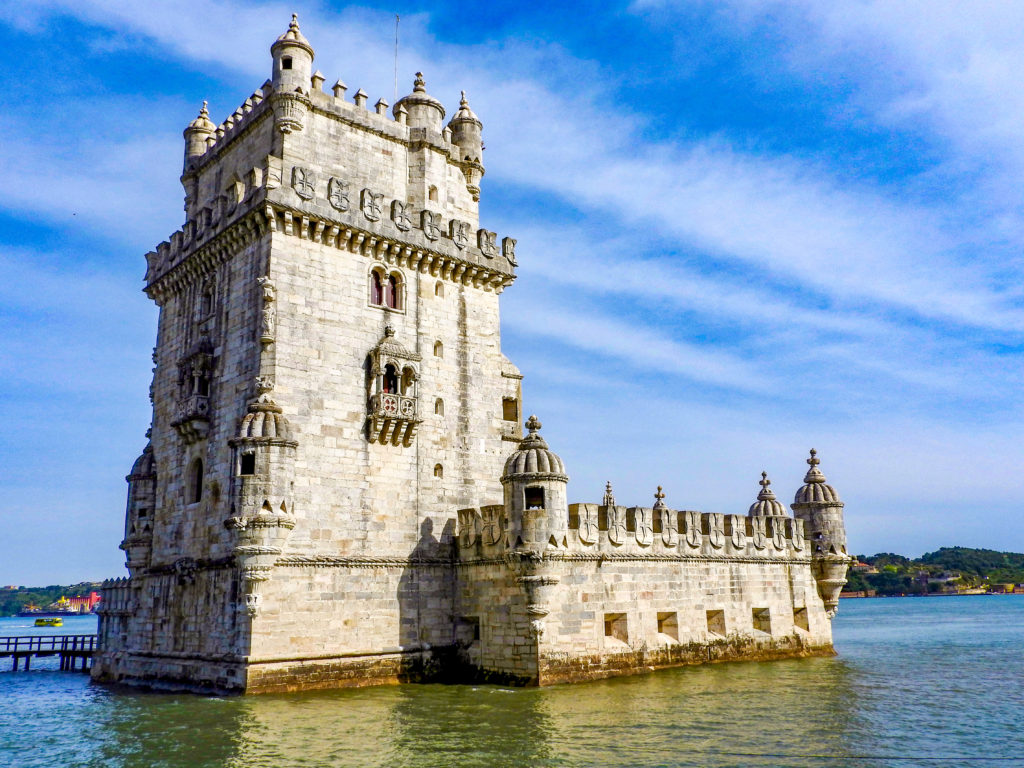
Belém Tower: The forgotten chess piece on the Tagus river
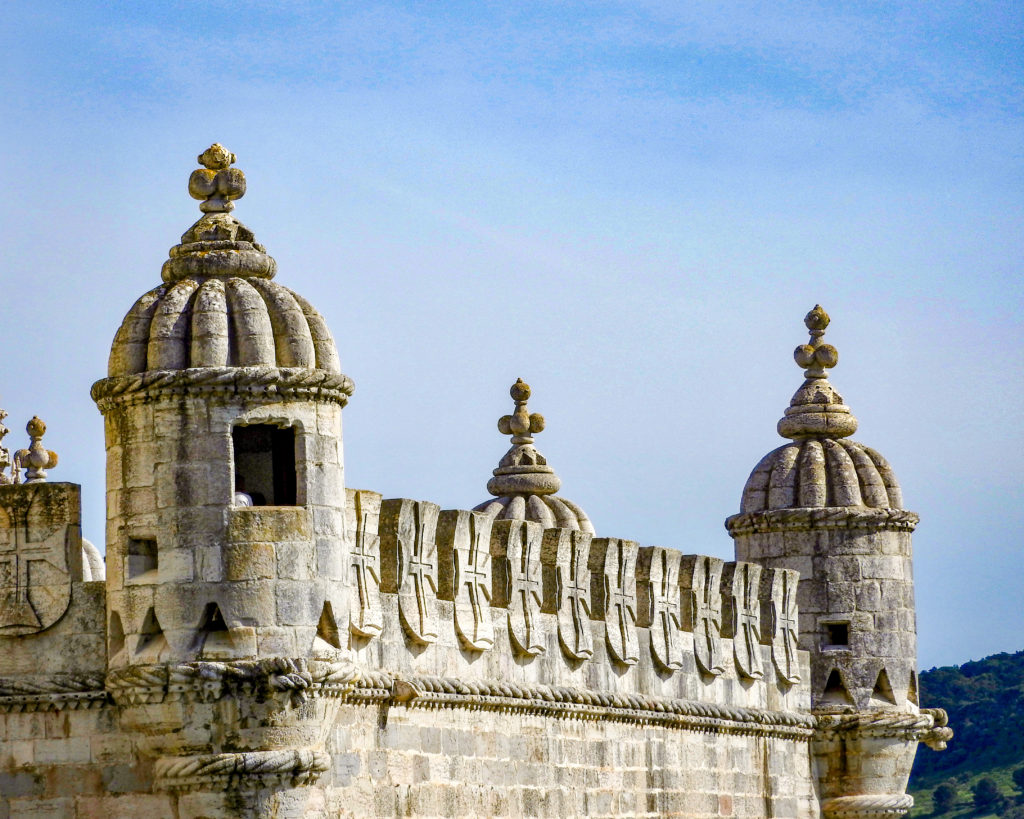
Extravagantly decorated Manueline spires atop the walls of Belém Tower
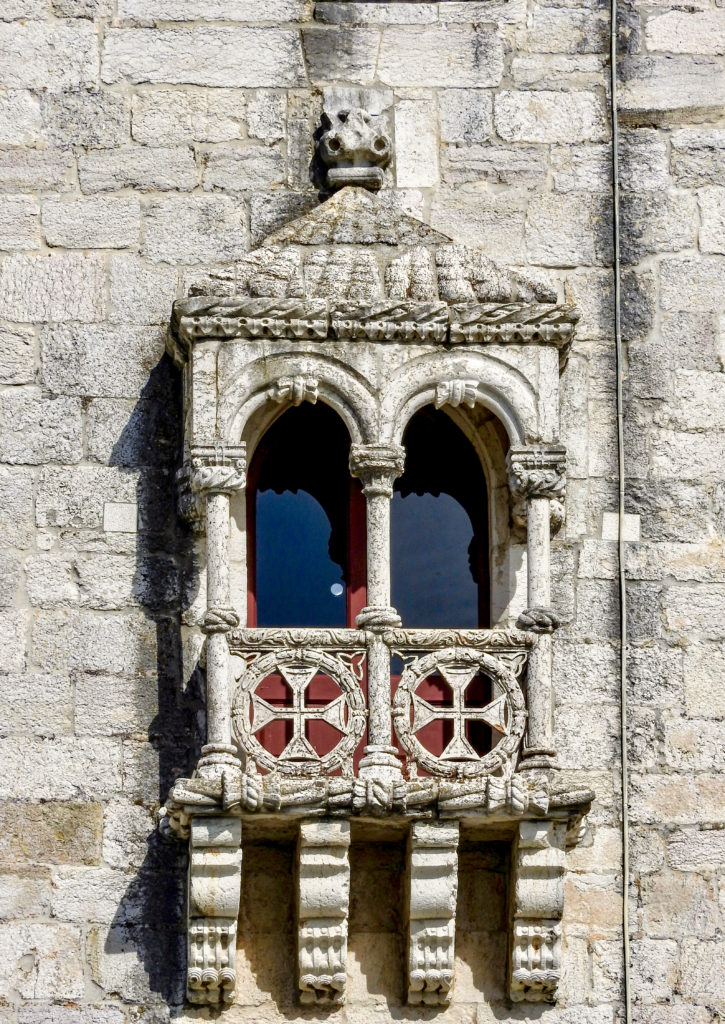
One of the richly decorated lookout windows of the tower
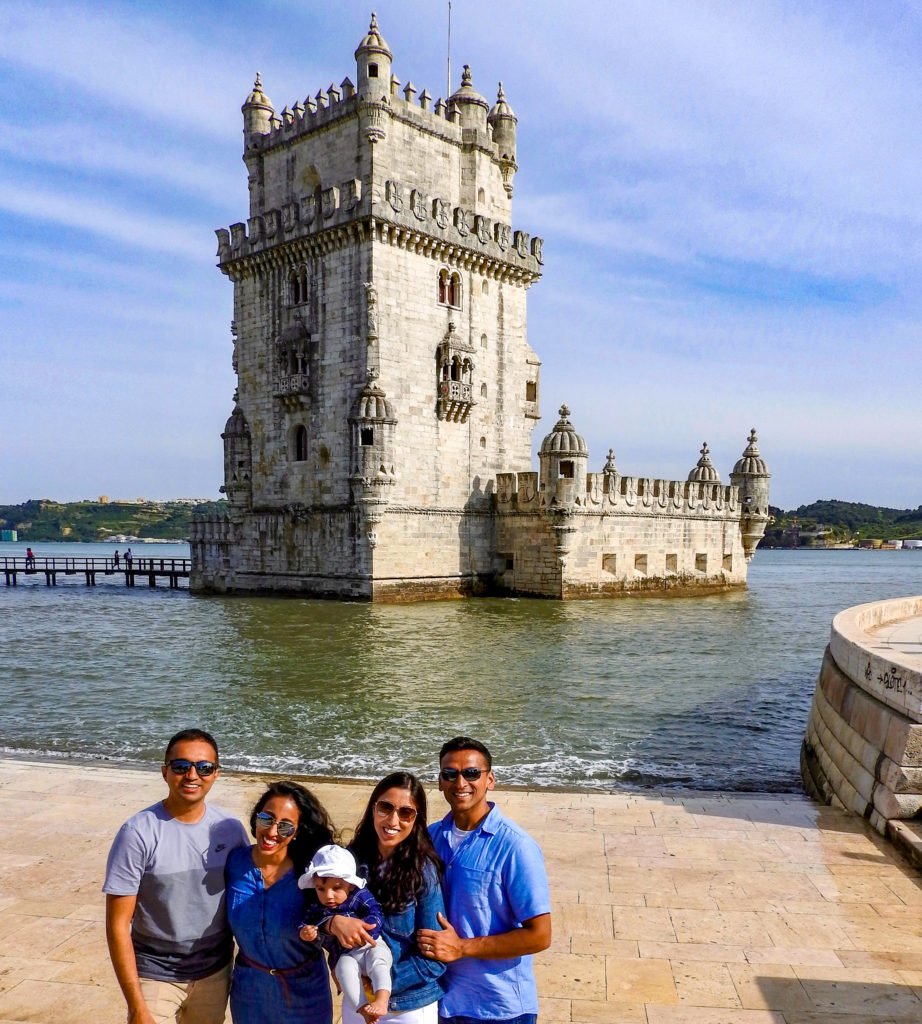
Striking a pose along the Tagus riverbank
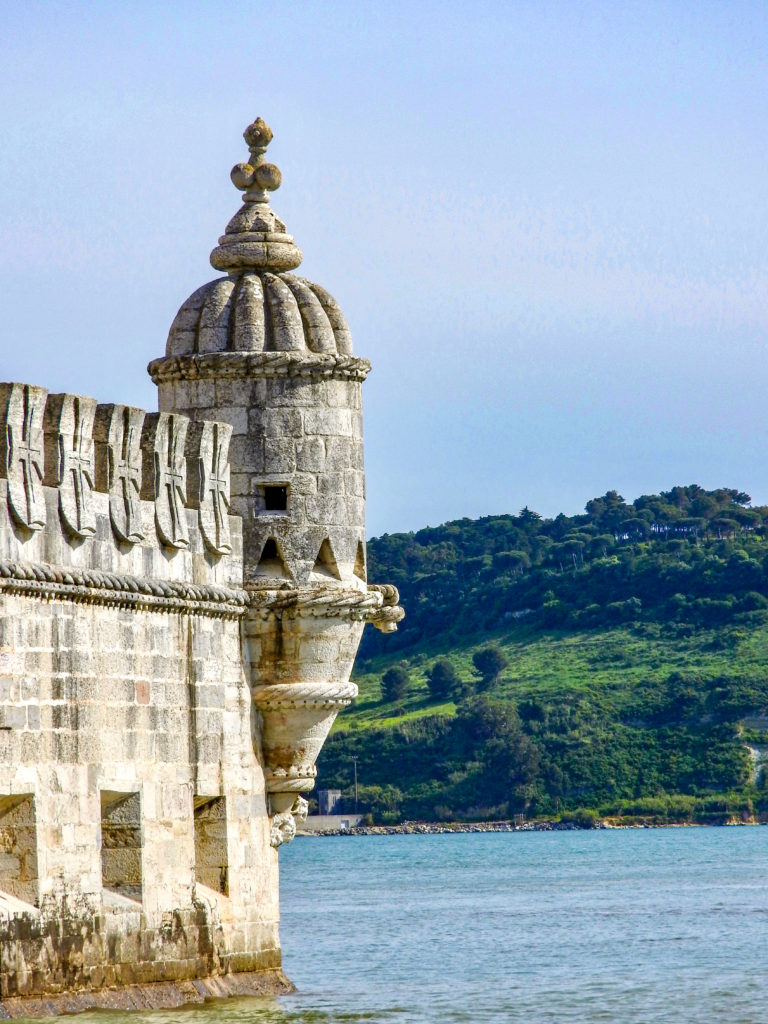
Solitary chesspiece, or tower spire?
5. Sink your teeth into delicious Pastel de Nata
While exploring the Belém area, we made it a point to sample the famed Pastel de Nata, a Portuguese egg custard tart pastry. Pastel de Nata is said to have originated in Belém. According to one of the origin legends, the monastery monks and convent nuns at the time would use up copious amounts of egg whites to starch their habits, and this divine pastry was created by the nuns in order to utilize the leftover yolks.
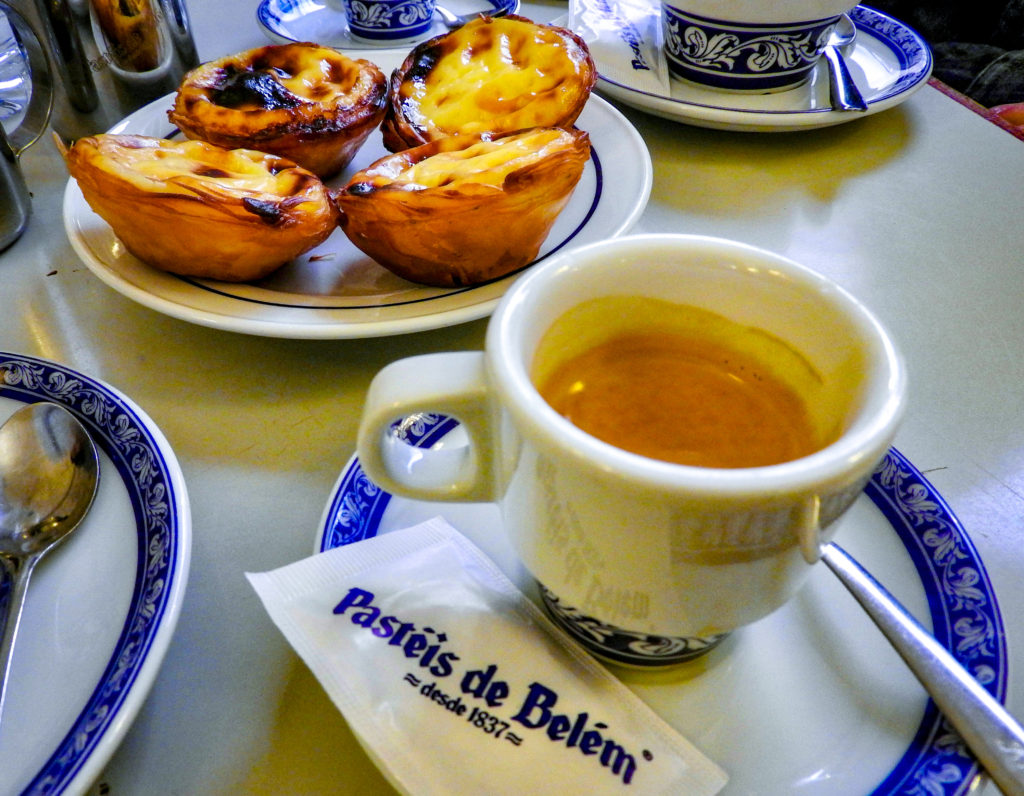
Perfect pairing of Pastel de Nata and Portuguese espresso at the Pastéis de Belém bakery
6. Spend an evening wine tasting in Bairro Alto
After our wine tasting exploits in Porto we didn’t think Lisbon could live up to the same, but boy were we wrong. An evening at Bairro Alto wine bar turned out to be the best wine & port pairing experience of our trip. BA Wine Bar boasts more than 200 bottles of wine available for tastings, and the knowledgeable wine servers were on hand to help provide the perfect pairing recommendations. We munched on a quintessential Portuguese snack – grilled sardines in olive oil, whilst pairing them with some tasty red wines and ports.
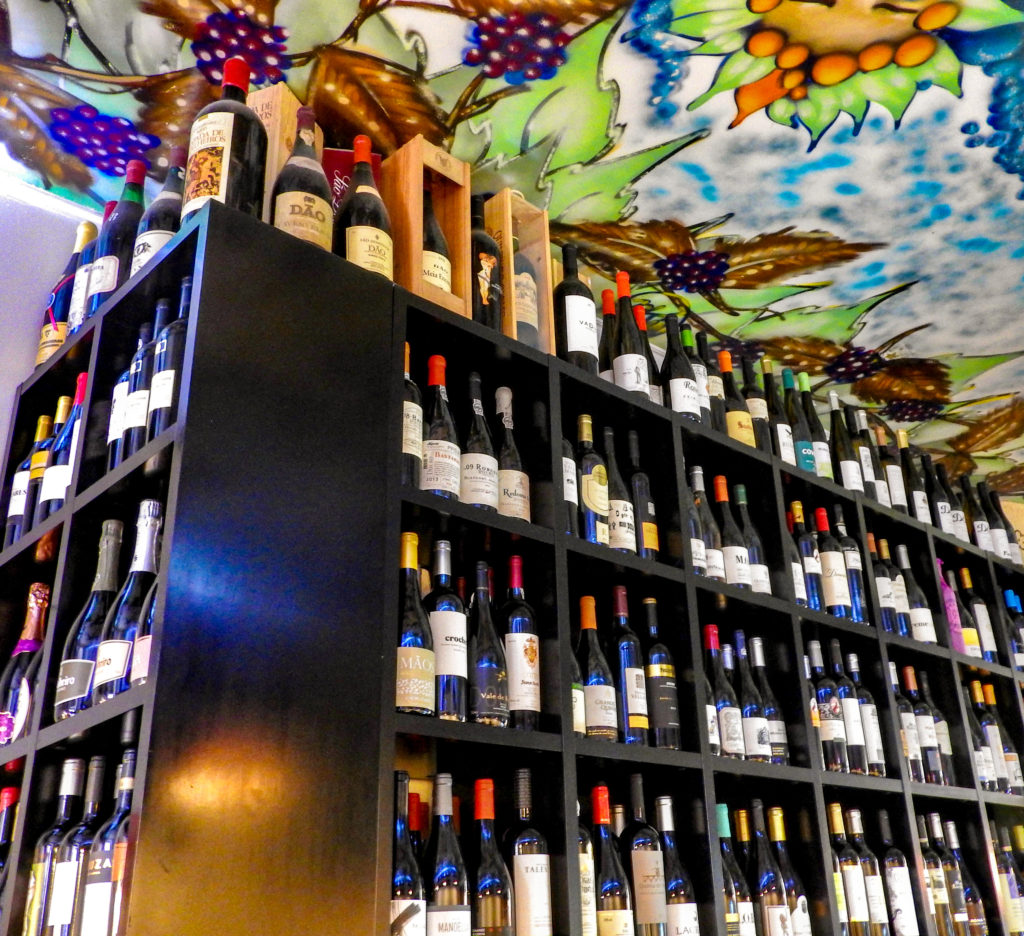
Colorful art graces the ceiling of the wine lined walls
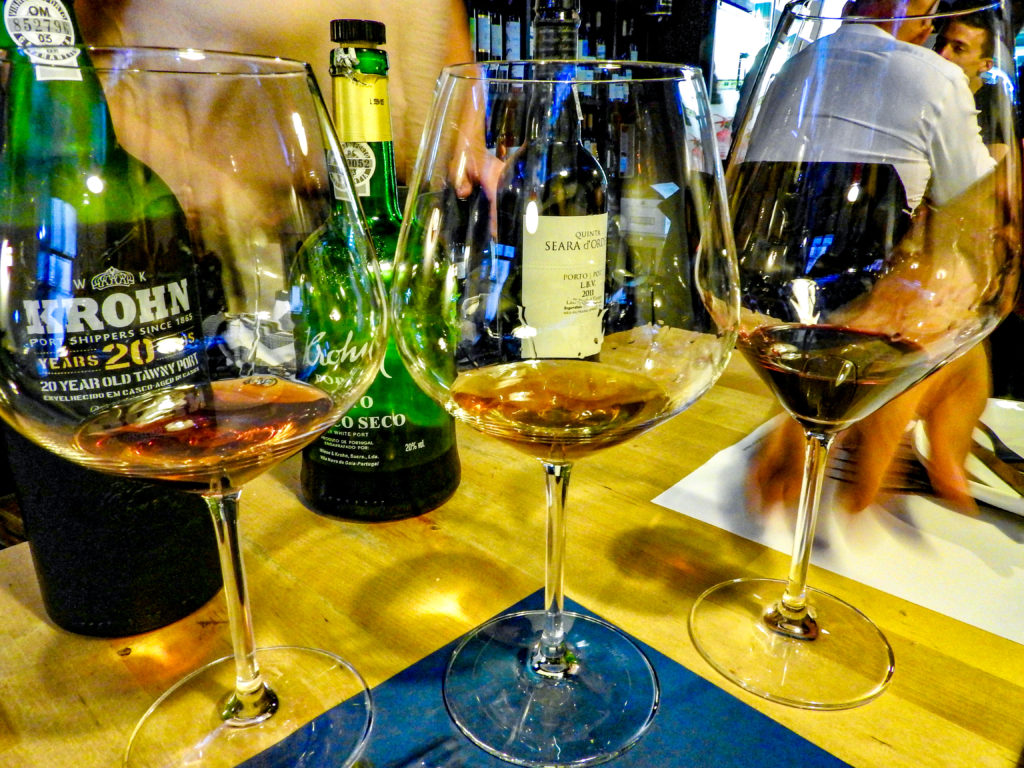
Our favorite pours of the Krohnn Port wines
7. Immerse yourself in melancholic Fado music
We rounded out one of our long days with a relaxing intimate dinner, featuring Fado music singers at a neighborhood restaurant in the old Lisbon district of Alfama. The melancholic tunes of Fado are said to have originated from the heartbreaking homesickness of sailors and travelers who would pass through Lisbon and Coimbra. Fado, often referred to as the sound of the soul of Portugal, is normally sung by a solo female singer or Fadoista who is accompanied by the strumming of a Portuguese 12-stringed mandolin. The Fadoista enthralled us through her achingly mournful songs, which seemed to channel the deepest longing and sadness or saudade of her soul.
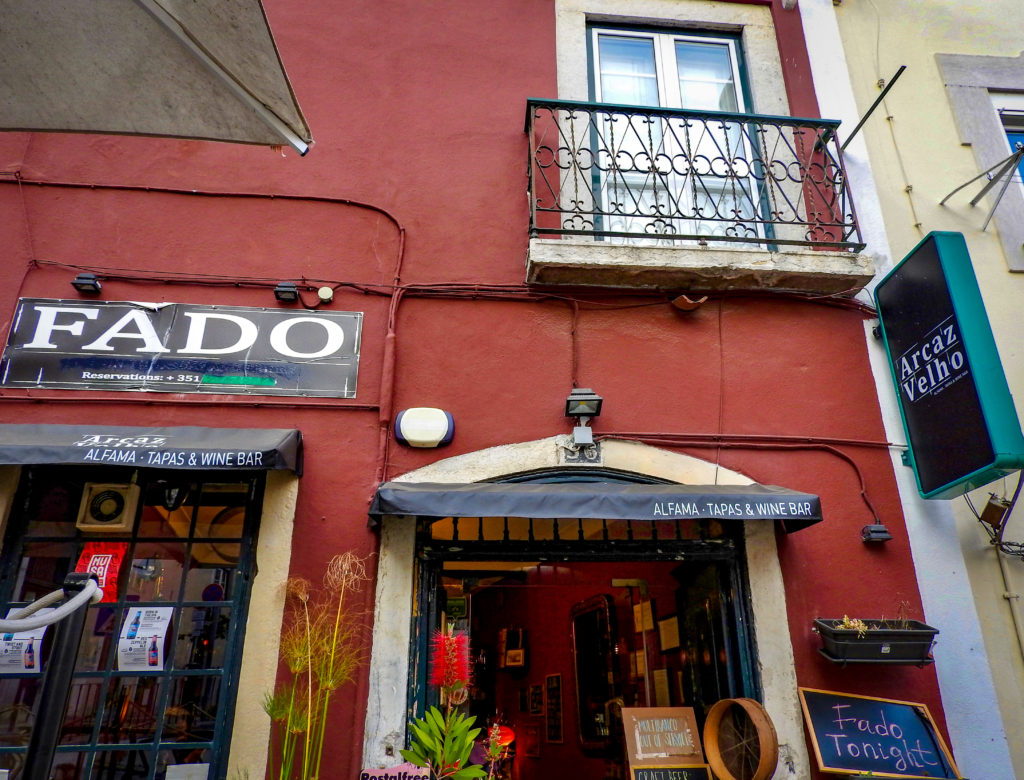
Arcaz Velho, Fado venue in the Alfama district

Our Fadoista was mesmerized by Baby A, who cleared her saudade away

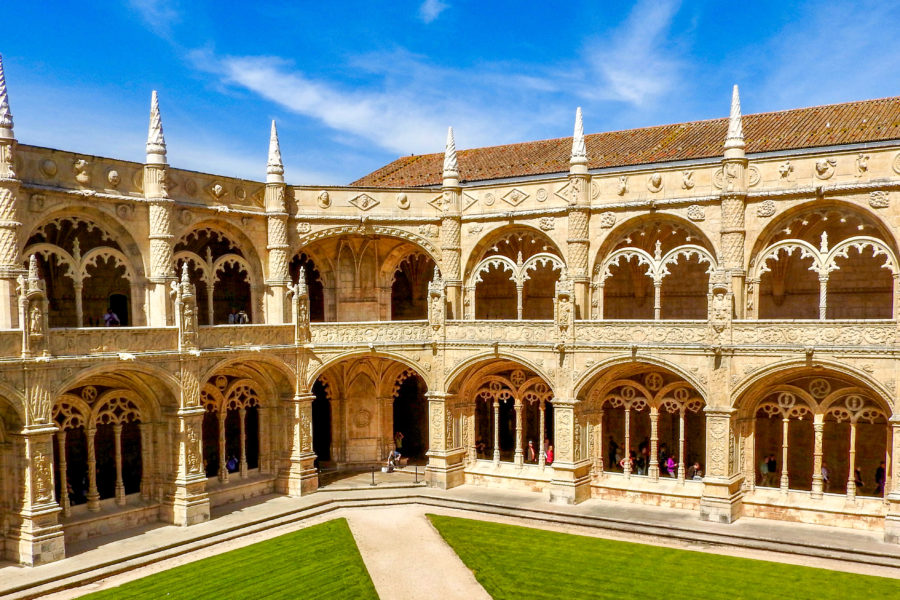

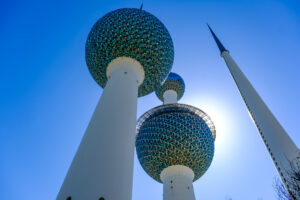
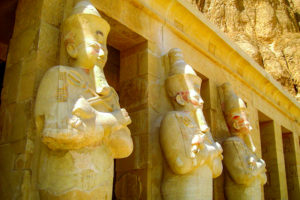




Leave a Reply
Please share your comments below!